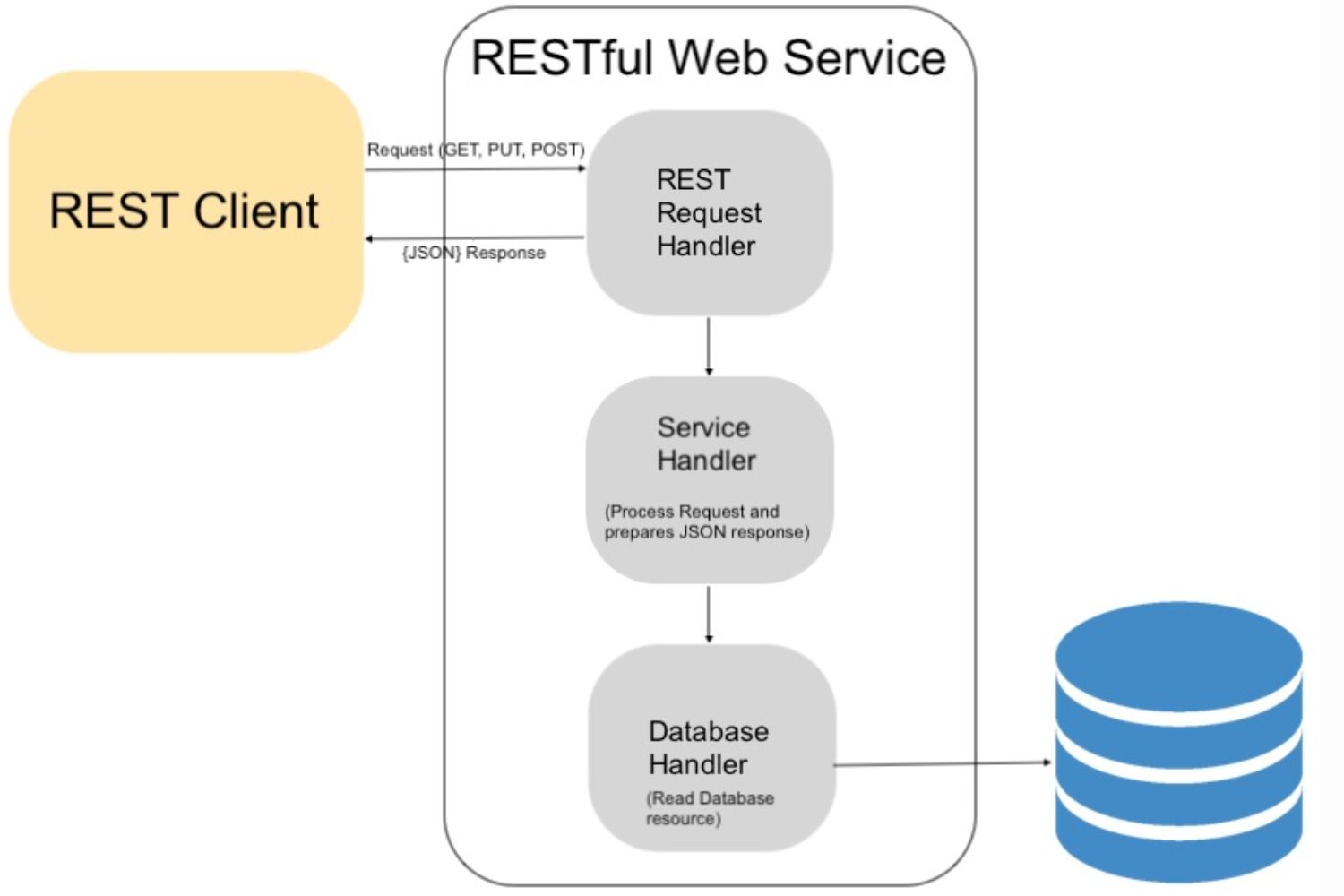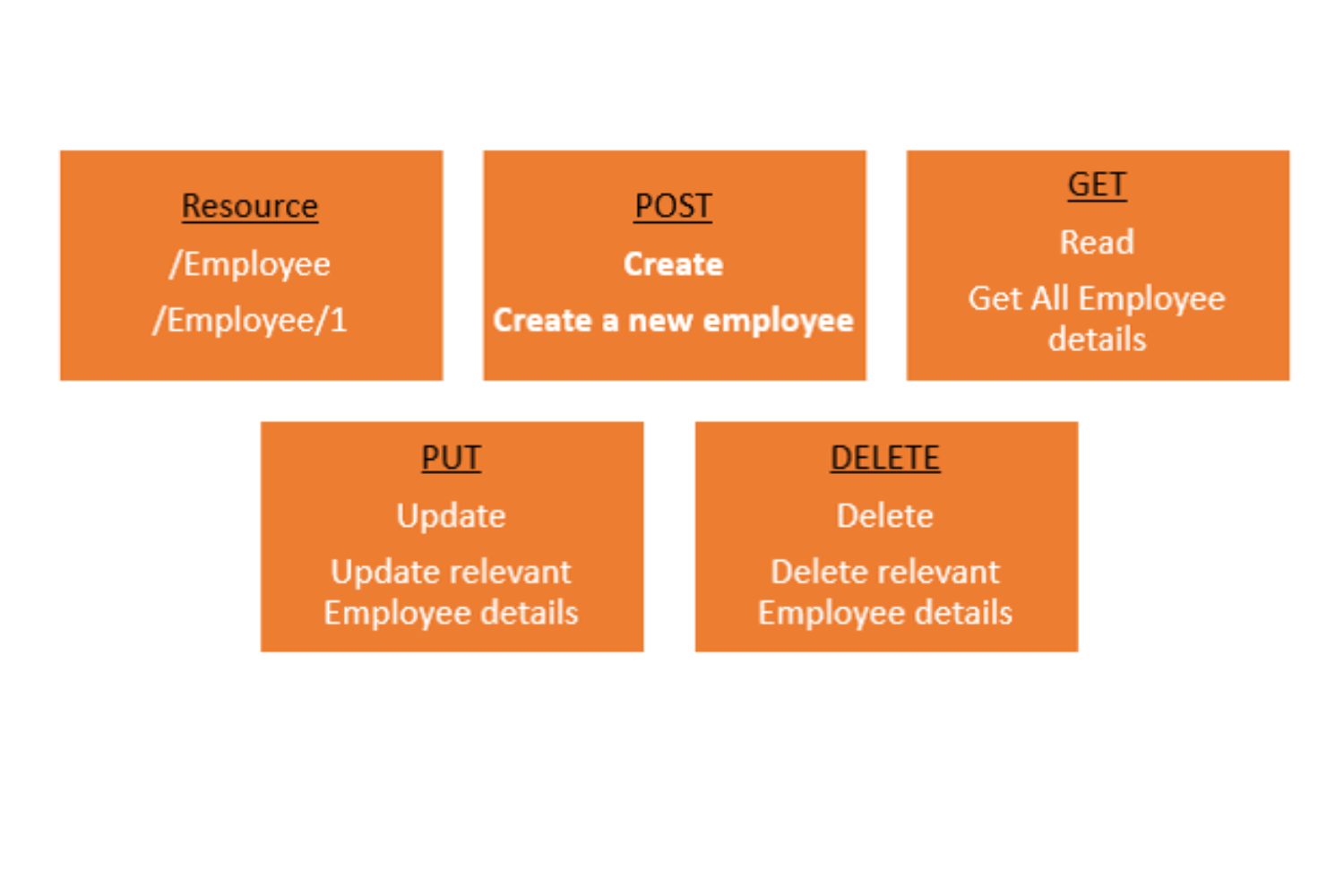
REST WEB SERVICE (API TESTING)
RESTful Web Services
REST or Representational State Transfer is an architectural style that can be applied to web services to create and enhance properties like performance, scalability, and modifiability. RESTful web services are generally highly scalable, light, and maintainable and are used to create APIs for web-based applications. It exposes API from an application in a secure and stateless manner to the client. The protocol for REST is HTTP. In this architecture style, clients and servers use a standardized interface and protocol to exchange representation of resources.


Key Principles and Concepts of REST
Resources: Everything is considered a resource in a RESTful design, which can be an object, data, or service. URIs (Uniform Resource Identifiers), which are commonly represented as URLs (Uniform Resource Locators), are used to uniquely identify resources.
HTTP Methods: To conduct operations on resources, REST employs conventional HTTP methods. The following are the primary HTTP methods used in REST:
GET: Retrieve a resource’s representation.
POST: Develop a new resource.
PUT: Update an existing resource or build a new one if one does not already exist.
DELETE: Deleting a resource.
Stateless: REST is stateless, which means that each request from a client to a server must include all of the information required to interpret and process the request. The server does not keep track of sessions between requests. This improves scalability and dependability.
Representation: Resources can be represented in a variety of ways, including JSON, XML, HTML, and other formats. Data format can be negotiated between clients and servers, and the client often defines its preferred format via HTTP headers such as “Accept.“
Uniform Interface: RESTful APIs adhere to a set of conventions that are uniform and consistent. This comprises using HTTP methods, resource URIs, and a small set of well-defined operations consistently.
Statelessness: Each request from a client to the server must include all of the information required to interpret and process the request. The server does not keep track of the client’s status between requests. This simplifies server design while increasing scalability.
Layered System: REST allows a system to be constructed of several, hierarchical layers, with each layer performing a defined purpose. This encourages modularity and adaptability.
Client-Server Interaction: REST emphasizes concern separation between the client and the server. The client is in charge of the user interface, whereas the server is in charge of processing requests and managing resources.
Advantages of RESTful web services
1.Simplicity: REST’s simplicity makes it easy to understand and implement. It uses standard HTTP methods (GET, POST, PUT, DELETE), which are familiar to most developers and can be tested easily using a web browser or tools like cURL.
2.Scalability: RESTful services are inherently scalable. They can handle high loads and large numbers of clients because they are stateless, and each request contains all the necessary information. This statelessness simplifies server design and enhances scalability.
3.Statelessness: Clients and servers in a RESTful architecture are stateless, which means that each request from a client to the server must contain all the information needed to understand and process the request. This simplifies server design and enhances reliability.
4.Flexibility: REST allows for multiple data formats, typically XML, JSON, or even HTML, to be used in representing resources. Clients can choose the format that best suits their needs, enhancing flexibility.
5.Independence of Platforms and Languages: RESTful web services can be built and consumed by a wide range of programming languages and platforms, as long as they can make HTTP requests. This promotes interoperability and allows diverse systems to communicate seamlessly.
6.Uniform Interface: REST uses a uniform set of conventions, such as HTTP methods (GET, POST, PUT, DELETE) and standardized status codes (e.g., 200 for OK, 404 for Not Found). This uniformity simplifies development and enhances the understanding of API endpoints.
7.Modularity and Layered Architecture: RESTful systems are often designed with a modular and layered architecture, making them more maintainable and adaptable to change. It allows for a separation of concerns and the creation of self-contained resources.
8.Well-Suited for Web and Mobile: REST is a natural fit for web and mobile applications, as it uses HTTP, which is the foundation of web communication. This makes it a logical choice for building APIs to serve these platforms.
9.Security: REST can be secured using standard mechanisms like HTTPS, OAuth, and API keys to protect data transmission and ensure secure access.
10.Evolvability: RESTful APIs can evolve over time without breaking clients. New resources can be added, and changes to existing resources can be made using versioning or by ensuring backward compatibility, allowing for long-term maintenance and updates.
11.Community and Tools: There is a large and active community around REST, which means that there are a plethora of tools, libraries, and frameworks available to simplify the development and consumption of RESTful web services.
Job Roles
1. Web design
2. Front-end web development
3. Web development
4. Full stack developer
5. Web Developer
6. User interface design
7. User experience design
8. SEO specialist
9. Web Application Developer
Salary Expected
The salary for API web services ranges between ₹13 Lakhs to ₹35 Lakhs Per Annum.
Course Highlights
1.Suited for students, fresher’s, professionals, and corporate employees
2.Live online classes
3.4-month program
4.Certificate of completion
5.Decision Oriented Program of Analysis
6.Live Classes by highly experienced faculties
7.Hands-on experience with real-life case studies

Conclusion
In conclusion, web services are a vital component of modern technology, allowing different systems to communicate and exchange data over the internet. They provide a standardized way for applications to interact and share information, making them essential for seamless integration and scalability. The choice of web service technology depends on factors such as project requirements, existing infrastructure, and the need for specific features like security or interoperability. So, web services play a crucial role in enabling the development of robust and interconnected software solutions.

